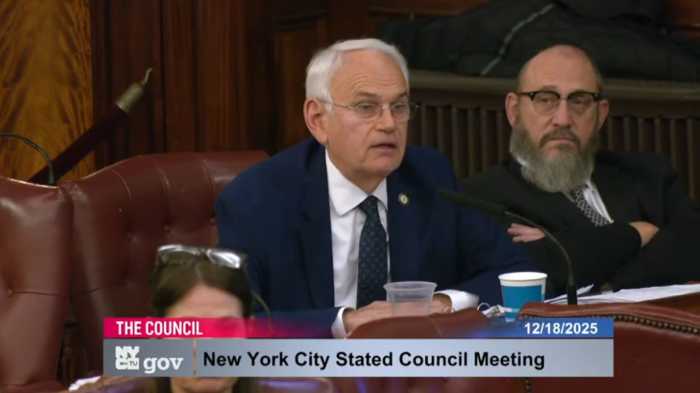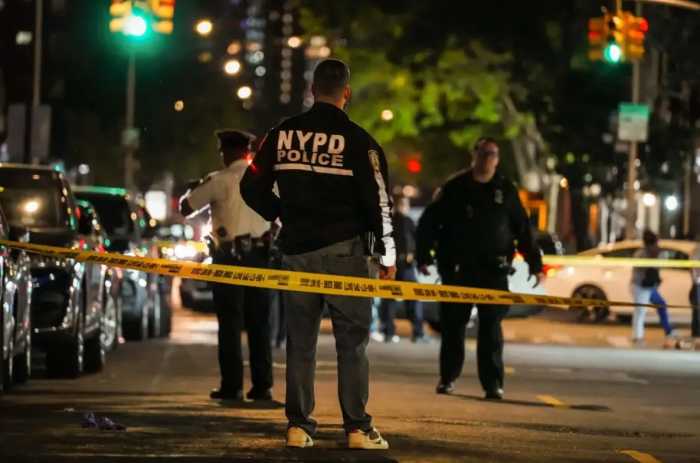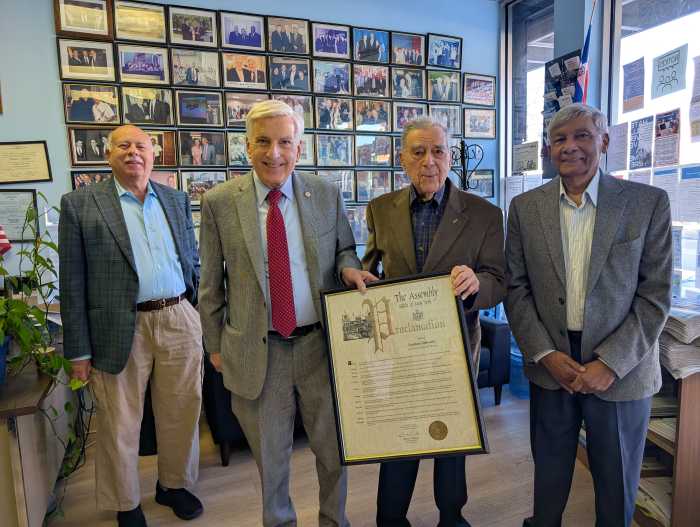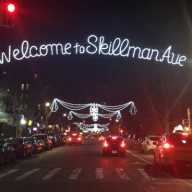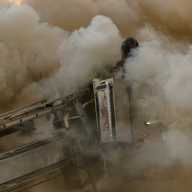Offers Real-Time Info On Arrivals
The Metropolitan Transportation Authority (MTA) released a test version of an app that allows riders on seven subway lines to know precisely when trains are expected to arrive at stations.
For the first time, subway riders will have access to the information on in-station countdown clocks from homes, offices, or while on the go.
The app, called MTA Subway Time, covers the 156 stations of the 1, 2, 3, 4, 5 and 6 subway lines and the 42nd Street Shuttle. At these stations, the MTA has installed countdown clocks that provide arrival estimates in minutes for upcoming trains.
The app joins MTA Bus Time, Metro-North Train Time, LIRR Train Time and MTA Bridges and Tunnels’ Travel Time in the MTA’s expanding list of real-time data tools for all customers.
“Today is the day that generations of dreamers and futurists have waited for,” said outgoing MTA Chairman and CEO Joseph J. Lhota last Friday, Dec. 28, 2012. “The ability to get subway arrival time at street level is here. The days of rushing to a subway station only to find yourself waiting motionless in a state of uncertainty are coming to an end. Now, you can know from the comfort of your home or office whether to hasten to the station, or grab a cup of coffee as part of a leisurely walk.”
This beta test version of MTA Subway Time is initially available for the iPhones, iPads and iPod Touch, and a desktop version is available through the web at https://tripplanner.mta.info/subway- Times/template.html. As part of its commitment to transparency and open data, the MTA is also providing a free live stream of arrival time data to third-party app developers, who can develop innovative ways of using that information to better serve customers on a variety of devices.
MTA Subway Time is designed to be quick to load and easy to use. The opening screen displays icons for the subway lines served by the app. Select a line to see all the stations it serves, then select a station to see real-time arrival estimates for up to nine trains approaching that station from each direction. For simplicity, stations that serve multiple lines show all trains combined in a single list.
The arrival time estimates can be refreshed anytime by touching the icon in the upper right of the screen. The exact time the data was provided is displayed at the bottom of the screen.
The app is synchronized with the mta.info website displaying planned service changes and real-time service disruptions. The MTA is evaluating how to best incorporate this real-time information into its point-to-point trip planning web utility, Trip Planner +.
MTA Subway Time is designed to handle up to 5,000 incoming requests per second. To improve performance and reliability, the data that powers Subway Time is among the first MTA products to be hosted on an open cloud-based system. By storing data in the cloud, as managed by the company Acquia, the MTA can organically expand and contract its data needs to match changing demand as it fluctuates over the course of the day and the year.
The cloud-based approach proved its worth during Hurricane Sandy, when demand for the mta.info website spiked to many times normal levels. Rather than strain its own computer servers, the MTA migrated the website to the Acquia cloud, where it remained available and reliable throughout the storm to provide immediate information to customers.
MTA Subway Time, like the countdown clocks at stations, is powered by a system called Automatic Train Supervision (ATS). This modern, digital computer system is used by train dispatchers and managers to monitor and control train movement. It is made possible by more than a decade of work and hundreds of millions of dollars’ worth of investment in the MTA Capital Program to modernize signal and dispatching equipment along the seven subway lines that now provide real-time arrival information.
Subway tracks along these seven lines are electronically separated into segments between 30 and 1,000 feet long. Whenever a train enters a new segment, it updates the ATS system with the train’s latest location, speed and route. ATS instantly shares the information with Subway Time, which automatically consults schedule data and feeds it through complex algorithms to create precision timebased arrival estimates.
“The existence of this sleek digital interface barely hints at the investment that had to be made in terms of hardware and infrastructure to make this enormous public benefit a reality,” said Thomas F. Prendergast, president of MTA New York City Transit. “Think of Subway Time as the small tip of a huge iceberg. For a product of this quality to be available on the lettered lines, we will need to commit hundreds of millions of dollars and years of dedicated effort.”
Automatic Train Supervision installation began in 1997. The system was activated in segments, with the substantial completion taking place in 2008. The project cost $20.8 million per year over 11 years, or $228.3 million in total.
The L line is controlled through Communications Based Train Control (CBTC), a signaling system that is even more advanced than ATS and is capable of feeding real-time train arrival estimates to Subway Time as it does for countdown clocks at stations. The MTA plans to add the L to Subway Time over the next six to 12 months. Signaling on the 7 line is being upgraded to CBTC. The project is expected to be completed in 2016, and the 7 could be added to Subway Time thereafter.
The remaining subway lines use a fixed block signaling system that dates to the dawn of the subways.
“The technology it uses has remained little changed since a time before computers, microprocessors, wireless telephones or handheld electronic devices,” Prendergast added. “It is a time-tested, fail-safe system that continues to flawlessly perform its vital intended function: preventing collisions. But it cannot offer us a digital feed.”
The MTA has long-term plans in place to upgrade these lines to ATS signaling, pending availability of funding in future capital programs. In the meantime, the MTA is exploring ways of providing real-time arrival estimates using other means. For example, New York City Transit has been experimenting with rudimentary countdown clocks at a number of stations on the lettered lines. And GPS could be used to provide estimates, at least for the elevated portions of routes.

